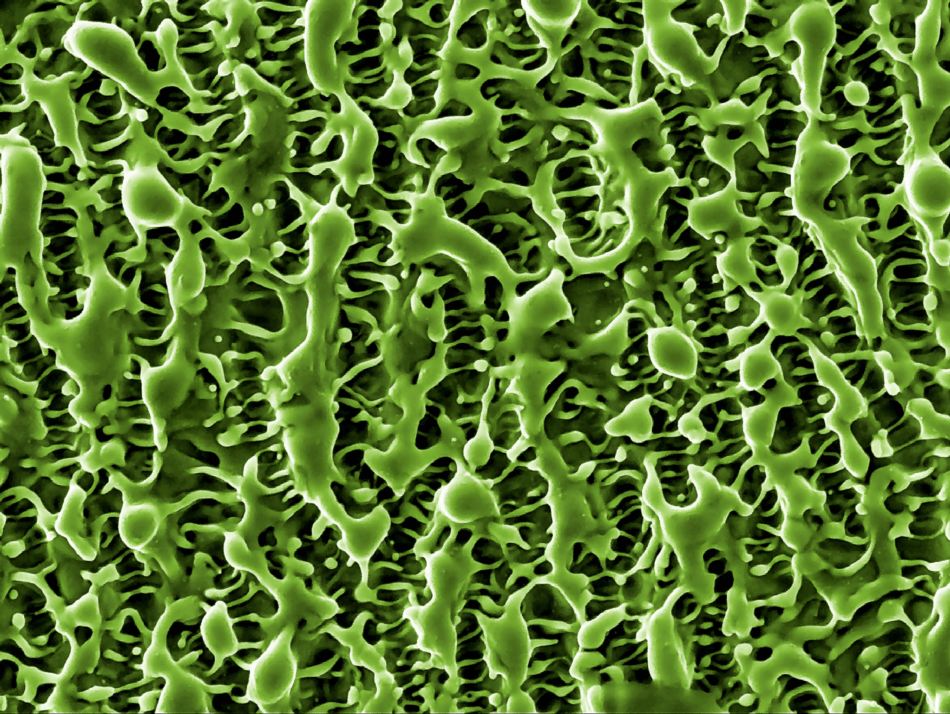A 2015 study demonstrated that femtosecond lasers could be used to create nanostructures. The team had recognized that demand was increasing from industries to develop new materials with specific properties relating to optical, mechanical, chemical, biological and other capabilities.
 Image Credit: Georgy Shafeev/Shutterstock.com
Image Credit: Georgy Shafeev/Shutterstock.com
To achieve this, the formation of structures on the surfaces at the nano-scale was the key. To create these nanostructures, the team looked to the femtosecond laser. They noted its benefits in minimizing thermal effects and collateral damage, as well as being an evolving field of study. The laser had previously been established as a reliable method for creating surface structures on metals and semiconductors by restructuring the molecules with a Gaussian-like beam intensity profile. The researchers adapted this process in their 2015 project.
The team developed an approach that used the optical vortex beams of the femtosecond laser to structure surfaces at the nanoscale. A q-plate was used to easily generate the different spatial distributions of the state of polarization of the vortex beams. Manipulating the optical vortex beam allowed the team to fabricate distinct surface patterns on silicon.
Having established a method of constructing nanostructures with femtosecond lasers, the next step was to produce more complex surfaces. The optical vector fields offered by the femtosecond laser presented opportunities that were not being fully capitalized on. In progressing the method to initiate new possibilities of unconventional surface structures, more applications spanning a greater number of sectors would be realized. It was envisioned that the technique could prove fundamental to new and essential applications in the fields of biomedical, optical, tribological, and more.
Developing Applications of Forming Nanostructures with Femtosecond Lasers
In 2016, scientists developed the use of femtosecond lasers in the formation of nanostructures. A team in Japan established that the lasers could be used to form periodic nanostructures to create new functional biomaterials.
The issue that the team was looking to solve was that while the most commonly used biomaterials are pure Titanium (Ti) and Ti alloys, these materials have no bio function, and this was a problem for bioactivity.
They used the femtosecond laser to develop a method capable of adding new functions to these alloys. They used the laser to form new periodic structures on the surface of the biomaterial, which can control cell spreading. The femtosecond laser is fundamental to the creation of these periodic nanostructures because it allows the structures to self-organize in the laser focusing spot on the surface of the metal or semiconductor.
It is anticipated that these developments will be useful in the functions of increased endothelial cell functions, controlling differentiation of mesenchymal stem cells in biomaterials, enhancing bone formation through controlling cell spreading of osteoblasts, and more.
Future Directions
Since these initial studies, much excitement has surrounded what may be possible through forming nanostructures with femtosecond lasers. While still a relatively new area of research, surface restructuring to form nanostructures with femtosecond lasers is already showing an impressive pace in terms of the scientific achievements it is gaining.
The first research studies attracted much attention in the scientific community, with a particular interest being generated in how the laser can be used to create fine structures with dimensions below the laser wavelength. Given that the method is very reproducible and suitable for the establishment of various applications, it is expected that interest will continue to rise and create new avenues of research. The future will likely continue to focus on developing the method for use in further applications, potentially focused in the fields of biomedical, optical, tribological, and even for applications in quantum devices.
Sources:
https://www.sciencedirect.com/science/article/pii/S2212827116004728
https://ieeexplore.ieee.org/document/7425522
Disclaimer: The views expressed here are those of the author expressed in their private capacity and do not necessarily represent the views of AZoM.com Limited T/A AZoNetwork the owner and operator of this website. This disclaimer forms part of the Terms and conditions of use of this website.